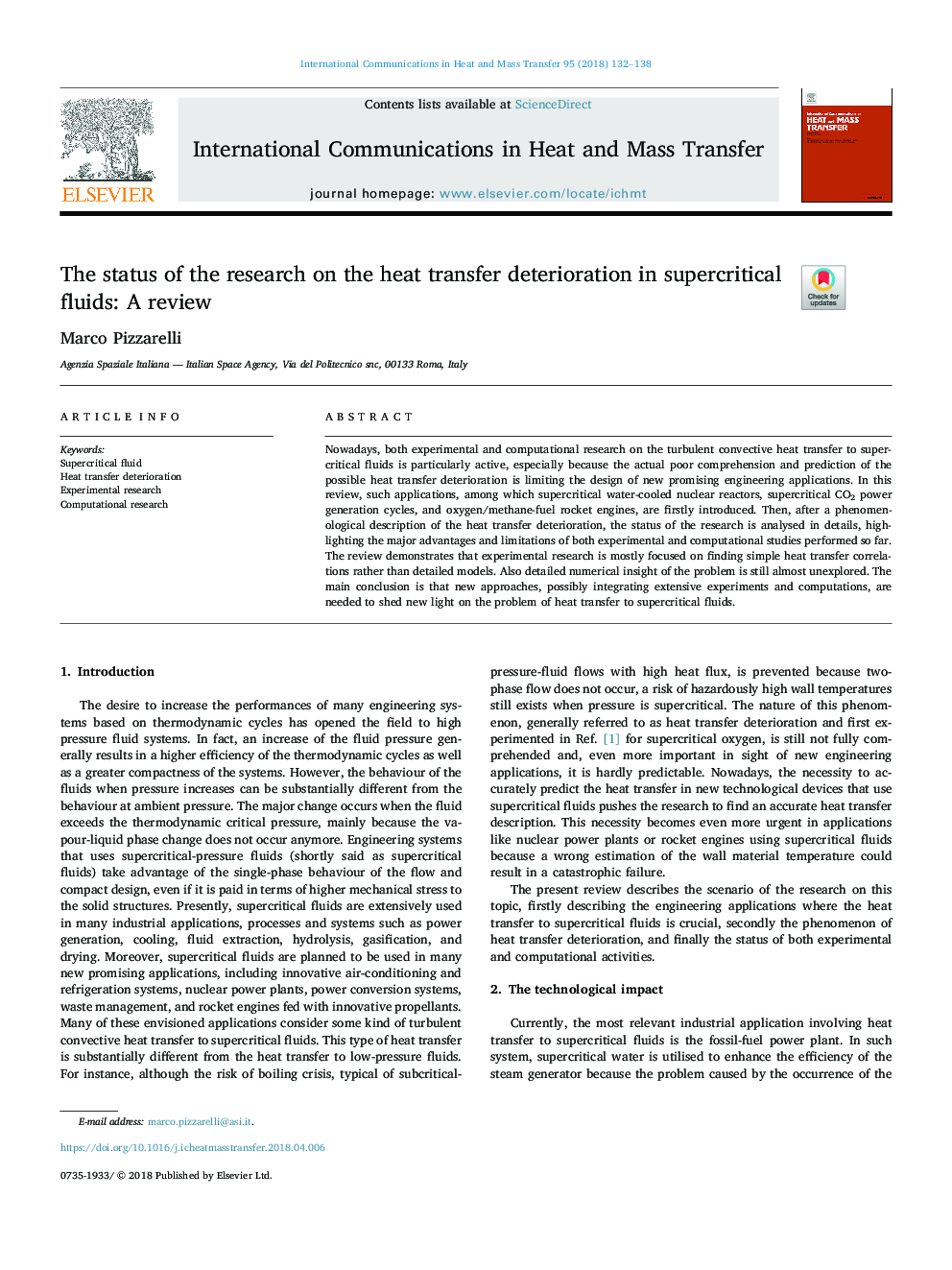| Article ID | Journal | Published Year | Pages | File Type |
|---|---|---|---|---|
| 7052829 | International Communications in Heat and Mass Transfer | 2018 | 7 Pages |
Abstract
Nowadays, both experimental and computational research on the turbulent convective heat transfer to supercritical fluids is particularly active, especially because the actual poor comprehension and prediction of the possible heat transfer deterioration is limiting the design of new promising engineering applications. In this review, such applications, among which supercritical water-cooled nuclear reactors, supercritical CO2 power generation cycles, and oxygen/methane-fuel rocket engines, are firstly introduced. Then, after a phenomenological description of the heat transfer deterioration, the status of the research is analysed in details, highlighting the major advantages and limitations of both experimental and computational studies performed so far. The review demonstrates that experimental research is mostly focused on finding simple heat transfer correlations rather than detailed models. Also detailed numerical insight of the problem is still almost unexplored. The main conclusion is that new approaches, possibly integrating extensive experiments and computations, are needed to shed new light on the problem of heat transfer to supercritical fluids.
Related Topics
Physical Sciences and Engineering
Chemical Engineering
Fluid Flow and Transfer Processes
Authors
Marco Pizzarelli,
